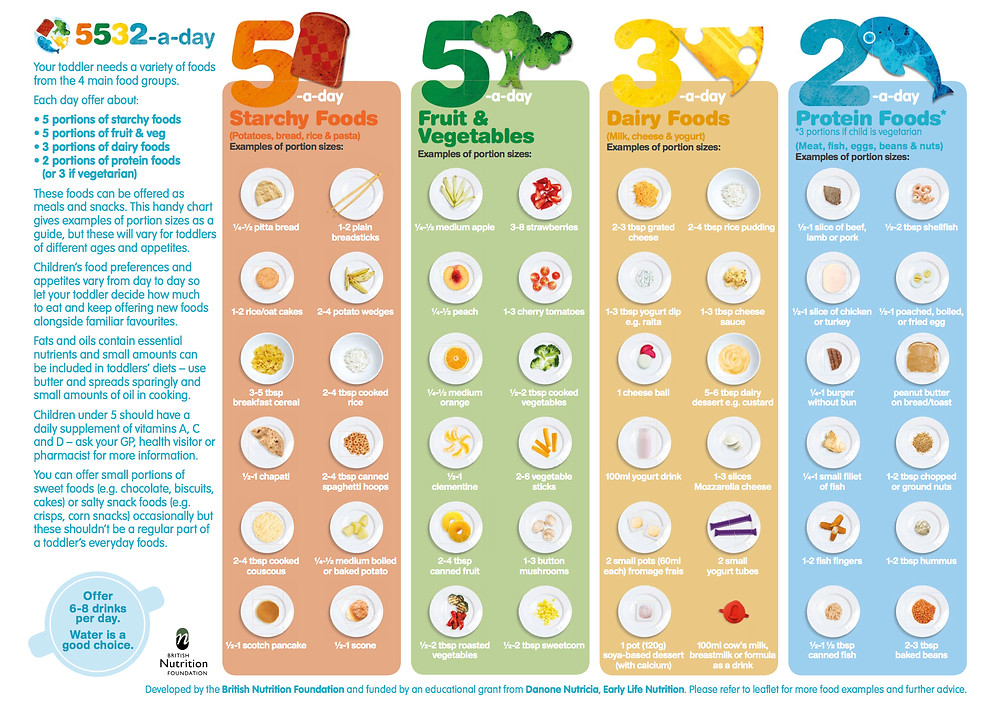Moulinex baby food grinder
Moulinex for making vellutate (veloutés), baby food and Pappa al Pomodoro
The husband of a friend of mine recently had surgery to repair a hiatus hernia. His convalescence requires him to be on a special diet, starting with simple liquids until the inflammation subsides. He can then move on to purées for two weeks, followed by two more weeks of mushy food.
But it does not have to be too bad. Below is a photo of some Borsch I made using the lighter coloured beetroot.
The gradual progression of the density of food and the complexity of ingredients seems very much like what babies experience when they are introduced to solids.
I was eight years old when my brother was born and I can remember how much my mother enjoyed cooking for my baby brother. She apparently had cooked the same things for me when I was his age and years later, I cooked the same things for my two babies.
Starting with simple, mainly liquid minestrine (light soups with simple ingredients) and pappe (pap made with bread), next came the purées and pastine (small shaped pasta), followed by semolina in brodo (broth). She also added puréed chicken or veal liver or finely minced chicken breast or white fish to broth and some overcooked white rice. She made vellutate (velouté, velvety soups), a chicken or veal broth with 1-2 puréed vegetables enriched with an egg yolk rather than cream, as cream was considered harder to digest. At an early age we were introduced to a dash of extra virgin olive oil and/or finely grated parmesan were introduced.
My mother used a Moulinex (Mouli) rotary vegetable mill for making purées. This was perfect for making baby food. The Mouli was also used for us older folk (father, mother and me and guests also) to make vellutate, not just with vegetables, she also used pulses – dried peas, lentils and chickpeas. The mushroom vellutata was pretty good.
Pulses were considered too difficult for babies to digest. They had to wait until they’d grown up a little. Basically, you can turn any left over vegetables into a good looking, tasty vellutata.
My mother was pregnant when she left Italy and may have brought the Mouli with her from Trieste (where we lived before we came to Australia), but maybe these made in France appliances were available in Adelaide in 1956 when my brother was born. Unlike food processor or a blender which blend the whole vegetable a Mouli purées the vegetables, leaves the skins behind and it’s the skins that are considered more difficult to digest. It is perfect for making Passata di Pomodoro.
Semolina cooked in meat broth was also a household favourite, with a bit of parmesan, of course. A light soup, a minestrina, made by puréeing one or two vegetables, beginning with the ones that were considered to be the easiest to digest at first – zucchini, green beans, carrots, pumpkin or potato.
A little spinach came later, but always, the minestrina was finished off with a little drizzle of oil. As a variation and for health – fish was supposed to help develop intelligence, she used to make minestrine using white fish, which also contained either puréed potatoes or tiny pastina shapes – stelline (little stars).
I still have my Mouli tucked away in the cupboard where I keep appliances that I seldom use, but keep just in case I ever need them again, alongside my potato ricer and a vintage Bialetti electric pasta machine designed to mix the flour and eggs to form the dough and extrude the pasta through plastic dies of various shapes.
The potato ricer can also be used for squeezing other soft, cooked vegetables like carrots or pumpkin.
There are various cake tins for making kuglof, panettone, savarin, pâte or terrines that are lined with pastry, ornate copper jelly or ice cream molds.
And what about the metal rods to shape and fry the cannoli shells – a Sicilian specialty – and some conical rods to make cream horns, the shape that Neapolitans use? There is a pastry and piping bag just in case I wish to make and fill cream puffs and an icing bag. Both bags are complete with nozzles of different sizes and shapes.
Probably the least used object in that space is a jelly strainer bag made of very fine calico designed to strain the solids from meat or fish broths. The clarified liquid can be used to make clear jelly, such as in pork pies or glaze a terrine. And it is very useful for making fruit jelly… cook the fruit, strain out the pulp, skin and seeds and use the liquid to make the jelly. The bag rests in a stand and can strain overnight to get the maximum amount of liquid. I am guessing that it could be used to drain cheese curds or yogurt, but I use a colander lined with muslin for that. The jelly bag was a present many years ago from a dear friend who brought it back from Copenhagen.
The clarified liquid can be used to make clear jelly, such as in pork pies or glaze a terrine. And it is very useful for making fruit jelly… cook the fruit, strain out the pulp, skin and seeds and use the liquid to make the jelly. The bag rests in a stand and can strain overnight to get the maximum amount of liquid. I am guessing that it could be used to drain cheese curds or yogurt, but I use a colander lined with muslin for that. The jelly bag was a present many years ago from a dear friend who brought it back from Copenhagen.
My brother and my son Alex both loved pappa di pane when they were babies but my daughter always preferred broth with pastina. The broth was made with meat and a carrot and a piece of celery, but not onion – this is too heavy for babies. The carrot and celery were puréed once they were cooked and returned to the broth.
The pappa may not sound very tasty or nutritious, it consists of white bread soaked in water and boiled till it becomes a smooth pap. But this is where the magic comes in. The pappa di pane was enriched with a little extra virgin olive oil and when the baby was a few weeks older a tiny bit of grated parmesan could be added. The bread could also be boiled in a clear meat broth instead of water and when the baby is older by a few weeks a little stewed tomato was mixed into it , maybe cooked with a basil leaf…. and the Mouli was used again to remove the skin and release the pulp.
But this is where the magic comes in. The pappa di pane was enriched with a little extra virgin olive oil and when the baby was a few weeks older a tiny bit of grated parmesan could be added. The bread could also be boiled in a clear meat broth instead of water and when the baby is older by a few weeks a little stewed tomato was mixed into it , maybe cooked with a basil leaf…. and the Mouli was used again to remove the skin and release the pulp.
You can see why Italian babies develop a palate – a taste for flavour!
Adults never seem to lose the taste for pappa especially if they come from Tuscany. In a Pappa al Pomodoro (tomato), the soup is thickened with stale bread, and though this is a rather simple recipe, you can find various versions of it across Tuscany and some other regions of Italy.
Italian food is all about good produce – good quality white bread, fresh basil, fragrant tomatoes and extra virgin olive oil. The best pappa is made with ripe, full-flavored tomatoes, but it can also be made with good quality canned, crushed tomatoes.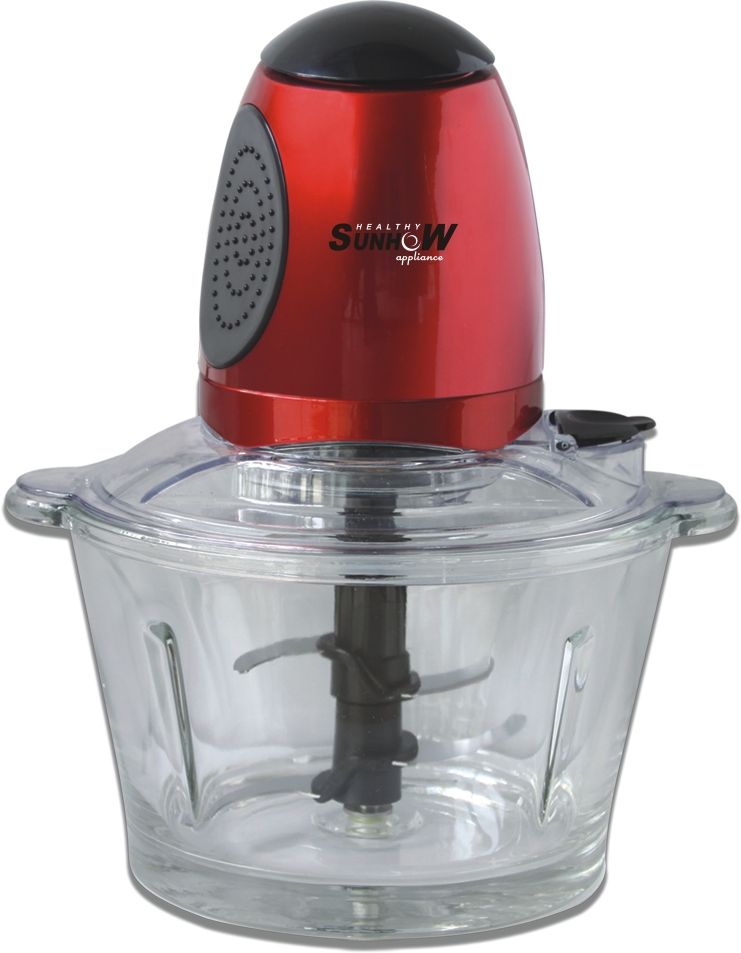 Whether you leave the tomatoes as they are our use your Moulinex is up to you.
Whether you leave the tomatoes as they are our use your Moulinex is up to you.
Ingredients:
1 medium sized onion, finely diced, 2-3 garlic cloves finely chopped
extra virgin olive oil to stew the tomatoes, plus extra for drizzling
1k of fresh peeled and chopped tomatoes or a can (800g, good quality)
200g of 1-2 day old bread, crusts removed and cut into small chunks
2 cups of chicken or vegetable stock or water
salt and pepper
fresh basil
Heat some oil in a large saucepan and sauté the onion and garlic until softened and fragrant.
Add the tomatoes and simmer until thick and most of the liquid has evaporated (like making a salsa).
Add the stock, the bread, seasoning and some basil and cook on low heat for about 10 more minutes, stir regularly to break down the bread into pappa.
Serve the pappa warm or at room temperature topped with a drizzle of extra virgin olive oil and fresh basil leaves.
Like this:
Like Loading. ..
..
The 6 Best Food Mills in 2023
Before food processors were commonplace on kitchen countertops, many home cooks relied on a decidedly lower-tech device for making fruit and vegetable purées: the food mill. The gadget is perfect for making homemade baby food from scratch, wholesome sauces, smooth vegetable soups, and more. A food mill combines a large sieve with a crank-turned mechanism that forces food through the holes to create an evenly textured purée. If you’re thinking that’s exactly what a food processor or blender is for, think again—the food mill has a special ability neither of those machines has.
“The reason you would have a food mill over an immersion blender or food processor is that it removes seeds, skins, and pits,” says Marisa McClellan, cookbook author and creator of the website Food in Jars.
An avid canner, McClellan turns to one of her five food mills to puree tomatoes and apples in bulk. It takes away a lot of the tedium involved with these home cooking projects, including peeling, skinning, and seeding fruits and vegetables. She adds that using a food mill provides another significant benefit: “Your texture will be very uniform and a lot closer to a product that’s store-bought,” she says.
She adds that using a food mill provides another significant benefit: “Your texture will be very uniform and a lot closer to a product that’s store-bought,” she says.
Here are the best food mills for whatever you plan to purée.
Amazon
View On Amazon View On Wayfair View On Walmart
What We Like
What We Don't Like
For most home cooks, this well-designed model is the only one you’ll ever need. Oxo's Food Mill is very easy to assemble and disassemble. The clever design includes legs that snap out for resting your mill securely over various sizes of bowls, lifting the mill up and away from the food you’re processing. When you’re done, those legs flip in for easy storage. A stainless steel bowl makes it suitable for hot or cold foods, and it doesn’t pick up stains from ingredients like tomatoes or beets.
The food mill includes three different grinding discs, so you can choose the exact texture you want: smooth, chunky, coarse, or something in between. As with most Oxo products, the ergonomic design on the crank and handle makes it a pleasure to turn and hold. “This is a really great food mill for whenever you do a single batch of something, say 12 pounds or less,” says McClellan.
As with most Oxo products, the ergonomic design on the crank and handle makes it a pleasure to turn and hold. “This is a really great food mill for whenever you do a single batch of something, say 12 pounds or less,” says McClellan.
Price at time of publish: $55.95
Capacity: 2.3 quarts | Material: Stainless steel | Weight: 3.25 pounds | Dimensions: 14.75 x 10.25 x 7.25 inches | Dishwasher Safe: Yes | What’s Included: Three grinding discs
What Our Experts Say
“A good food mill should be a sturdy piece of equipment that can handle food for a crowd. While it can be used to quickly go through small amounts of product, a food mill is best for quickly puréeing large amounts of food versus a smaller tool like a ricer, which is a slower process. Food mills are used for breaking up food for soups, purées, and sauces.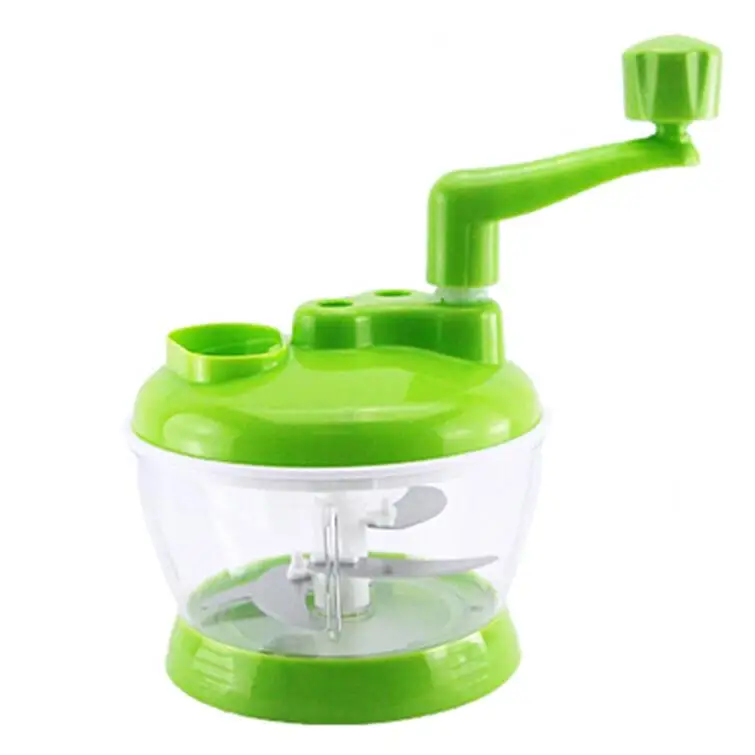 It’s great for mashed potatoes without the gummy and sticky texture.” — Joshua Resnick, lead chef and chef-instructor at the Institute of Culinary Education
It’s great for mashed potatoes without the gummy and sticky texture.” — Joshua Resnick, lead chef and chef-instructor at the Institute of Culinary Education
Amazon
View On Amazon View On Walmart View On Farmandfleet.com
What We Like
Can be used with hot and cold food
Non-slip hooks for easy placement
Can be disassembled for thorough cleaning
What We Don't Like
The Foley Manufacturing Company is the original creator of the food mill. Since the 1920s, it has been a go-to brand for housewares, but the food mill was especially innovative for its ability to efficiently sift flour. Its original purpose was to replace bulky flour sifters, the food mill is capable of much more. Over the years, the design has changed and food mills have more features, but this Foley food mill takes it back to the basics—it’s a simple tool that mashes and strains food.
“This food mill is a nice option because it's sturdy and comes in multiple sizes. It’s great for someone who cans jam or applesauce, makes a lot of tomato sauce, or cooks larger portions for a family,” says Anne Danahy, RDN, a registered dietitian nutritionist, recipe developer, and author of the cookbook “The Mediterranean Diet Cookbook for Two”. “It has hooks on the side to fit securely over a bowl or pot, and its stainless steel construction makes it dishwasher-safe.”
Some reviewers have noticed metal shavings when using this food mill, but this is easy to prevent. The crank should only be turned clockwise—turning it in the other direction dulls the blade, resulting in the metal shavings.
This food mill also comes in a 3.5-quart version for processing a larger capacity of food.
Price at time of publish: $39.99
Capacity: 2 quarts | Material: Stainless steel | Weight: 1.85 pounds | Dimensions: 13. 87 x 8.37 x 18.62 inches | Dishwasher Safe: Yes | What’s Included: One grinding disc
87 x 8.37 x 18.62 inches | Dishwasher Safe: Yes | What’s Included: One grinding disc
What our Experts Say
“A food mill is a handy, low-tech, and less expensive alternative to a food processor. It grinds and purées food smoothly while also removing skins and seeds. While it requires some muscle to turn the handle, it can save time because you don't have to peel, core, or seed your food before puréeing it. Food mills are great for making silky smooth mashed potatoes, tomato sauce, and applesauce.” — Anne Danahy, RDN, a registered dietitian nutritionist, recipe developer, and author of the cookbook “The Mediterranean Diet Cookbook for Two”
Amazon
View On Amazon View On Opticsplanet.com View On Overstock
What We Like
Doesn’t require arm strength
Lid with food chute limits splashing
Power switch easily reverses direction
What We Don't Like
Small capacity
If you’re an avid home canner or anyone else with a lot of produce on deck to purée, you want to go for an electric model like this one.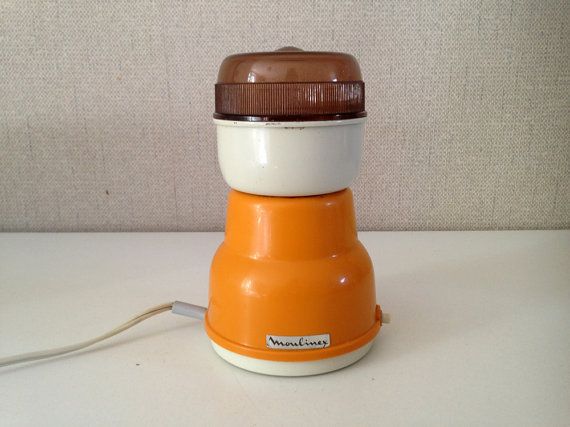 The motorized milling action means you don’t need to crank by hand—an action that is fine in small doses but can cause major arm fatigue over time.
The motorized milling action means you don’t need to crank by hand—an action that is fine in small doses but can cause major arm fatigue over time.
“An electric mill is best for anyone doing a lot of something," says McClellan. "I came to really appreciate it when I started processing more than 25 pounds of tomatoes at a time." Like manually operated food mills, this one includes three stainless steel discs to select the precise texture you want. It also eliminates the need to strain, skin, or seed your produce. The built-in splash guard prevents a mess as the mill whips through pounds of food more quickly than you could by hand. It’s also an ideal choice for gardeners with bumper crops they want to process, give away, or store for the winter.
Price at time of publish: $69.99
Capacity: 1.75 quarts | Material: Plastic, stainless steel | Weight: 4 pounds | Dimensions: 15.5 x 9.5 x 6. 5 inches | Dishwasher Safe: Some parts | What’s Included: Three milling discs
5 inches | Dishwasher Safe: Some parts | What’s Included: Three milling discs
What Our Experts Say
“Food mills should be used on soft foods so as to not damage the tool. It should be disassembled to be cleaned as best as possible and dried completely before being reassembled—otherwise, rust can form in the nooks and crannies. It’s great for quickly processing food like tomato sauce, mashed potatoes, and baby food.” — Joshua Resnick, lead chef and chef-instructor at the Institute of Culinary Education
Amazon
View On Amazon
There are many baby food makers out there, but all you need is a simple food mill to yield creamy baby food with a consistency similar to those at the store. This one is small, compact, and travel-friendly. It doesn’t require a power source or batteries, so you can use it on the go.
While most food mills have a bottomless bowl, which requires a secondary bowl or pot to collect the milled food, this one stores the food in the same component. You can mill the food using the easy-turn handle and feed your baby directly from the wide-mouth container with the included spoon. It may only yield one or two servings per use, but any leftover food can be stored in the same container with the lid that it comes with.
You can mill the food using the easy-turn handle and feed your baby directly from the wide-mouth container with the included spoon. It may only yield one or two servings per use, but any leftover food can be stored in the same container with the lid that it comes with.
When you’re done, you can place the mill on the top rack of the dishwasher for easy clean-up.
Price at time of publish: $29.99
Capacity: 115 milliliters | Material: Stainless steel and plastic | Weight: 0.58 pounds | Dimensions: 3.9 x 6.3 x 9.1 inches | Dishwasher Safe: Yes | What’s Included: Built-in stainless steel blade
What Our Experts Say
“Make sure you cook any hard foods (like apples or potatoes) first. The softer the food, the easier to grind. Food mills are great for making homemade baby food because they turn cooked fruits or vegetables into a nice smooth purée free from skins or seeds. ” — Anne Danahy, RDN, a registered dietitian nutritionist, recipe developer, and author of the cookbook “The Mediterranean Diet Cookbook for Two”
” — Anne Danahy, RDN, a registered dietitian nutritionist, recipe developer, and author of the cookbook “The Mediterranean Diet Cookbook for Two”
Amazon
View On Amazon View On Walmart View On Kohls.com
What We Like
What We Don't Like
If you’re going to be milling purees, you’ll probably want a comfy handle, and this ergonomic design delivers. It’s built for smooth and easy turning to put less pressure on your hand and arm as you mill through pounds of produce. The handle and knob are covered in grippy no-stick silicone.
The food mill includes the typical three grating discs for mashed potatoes, salsa, or silky smooth vegetable soups. Two looped metal hooks allow you to rest the food mill on the rim of a bowl so that it stays in place. When you’re all done with your project, simply put it in the dishwasher for no-fuss cleanup. Cuisinart is known for its quality, and this food mill reflects the brand’s reputation. The durable design and quality materials will stand the test of time.
The durable design and quality materials will stand the test of time.
Price at time of publish: $39.99
Capacity: 2.3 quarts | Material: Stainless steel | Weight: 1.43 pounds | Dimensions: 14.8 x 10 x 3.7 inches | Dishwasher Safe: Yes | What’s Included: Three cutting discs
What Our Experts Say
"It's best to rinse your food mill well right after using it. If you let it sit, the food will dry and harden, making it much harder to clean. Most are dishwasher-safe on the top rack." — Anne Danahy, RDN, a registered dietitian nutritionist, recipe developer, and author of the cookbook “The Mediterranean Diet Cookbook for Two”
The 7 Best Potato Ricers and Mashers of 2023, Tested and Reviewed
Amazon
View On Amazon View On Kitchen-universe.com
What We Like
What We Don't Like
If you want to invest in an upgraded food mill, look no further than this beauty from Rösle, which Fine Cooking calls "the Cadillac of home food mills. " Its gleaming appearance is just the beginning of what sets it apart from less expensive models. The sleek, elegant design goes beyond the appearance. This food mill’s solid, single-piece construction leaves no welding seams for food to get stuck in. It’s unusually spacious and reassuringly heavy.
" Its gleaming appearance is just the beginning of what sets it apart from less expensive models. The sleek, elegant design goes beyond the appearance. This food mill’s solid, single-piece construction leaves no welding seams for food to get stuck in. It’s unusually spacious and reassuringly heavy.
The crank turns so smoothly you can mill longer with less exertion. It’s designed with very little space between the blade and the sieve, which speeds up milling and reduces the effort required. It’s sold with only two discs, but others are for sale separately. It works so well that even the tiniest seeds—like those in raspberries—don’t pass through the sieve as food is processed.
Price at time of publish: $199.95
Capacity: 3.25 quarts | Material: Stainless steel | Weight: 3 pounds | Dimensions: 17.5 x 9.25 x 7.5 inches | Dishwasher Safe: Some parts | What’s Included: Two sieve discs
The Best Immersion Blenders for Soups, Sauces, and Smoothies
Final Verdict
The Oxo Good Grips Food Mill is a great all-purpose food mill. If you’re planning on puréeing large quantities on a regular basis, check out the Weston Electric Food Mill.
If you’re planning on puréeing large quantities on a regular basis, check out the Weston Electric Food Mill.
What to Look for in a Food Mill
Mill Capacity
Keep in mind the amount of food you'll want to process at one time. Busy parents might prefer a tiny capacity that travels easily to make fresh purées for little eaters. Home canners preparing to process pounds of fruits and vegetables will want a large device—just note that these take more effort to crank and space to store. Midsize devices may be better for fresh sauces for small families.
Disc Options
Food mills typically come with interchangeable discs with holes of varying sizes for puréeing different foods. If you want to make seed-free jams and berry sauces, look for a mill with an ultra-fine disc (1 to 1.5 millimeters). A fine disc (2 millimeters) will remove both skin and seeds from cooked tomatoes and create creamy soups and silky purées. A medium disc (3 millimeters) smoothly mashes many vegetables and fruits, and a coarser disc works for chunkier sauces and soups.
Handle Components
A top-crank food mill should have an easy-to-turn handle, usually with a stabilizing crossbar at the top and a blade at its base that moves the food in the mill’s bowl. The flatter that blade, the more efficiently it will push food through the grinding disc instead of just spinning it in the bowl. While that blade compresses the food, the crossbar keeps pressure on the grinding disc to leave skin and seeds behind.
Sturdy Base
Whether electric or manual, resting or clamped to a counter or bowl, you'll want a sturdy base to keep the food mill steady. Food mills that rest on bowls typically have feet, hooks, or other supports that keep them above the resulting purée. Some may only rest on specific bowl or pot sizes and lips, so it’s worth setting everything up and testing the stability before adding cooked food.
FAQs
How do you use a food mill?
For most manual top-crank food mills, place cooked food into the mill’s bowl and turn the handle so that the blade sweeps through the food, separating skin and seeds and sending purée through the grinding disc. Unless the manufacturer’s instructions say otherwise, insert the removable disc so that the convex part faces up. Food mills almost always work best if you first cook the food until it is soft. If it still jams up, try reversing the direction you’re spinning the crank every few turns.
Unless the manufacturer’s instructions say otherwise, insert the removable disc so that the convex part faces up. Food mills almost always work best if you first cook the food until it is soft. If it still jams up, try reversing the direction you’re spinning the crank every few turns.
Electric food mills can work in the same way by toggling a switch or pushing a button. Continuous feed food mills, either manual or electric, work similarly, but may have parts designed and arranged differently so that they can handle high volumes.
How do you process tomatoes in a food mill?
Unless the food mill’s manual says differently, start with cooked tomatoes that are softened and cool enough to handle. Set up the food mill with your desired grinding disc size along with a bowl or pot to capture the purée. Work the tomatoes through in batches until the remaining skin and seeds are quite dry, emptying the collected scraps into the compost as needed to keep the blade turning smoothly.
Does a food mill remove tomato seeds and skin?
Food mills are designed to remove both skin and seeds, but how efficiently they do so depends on the grinding disc size. Discs with holes larger than 2 millimeters will likely let some tomato seeds through, but will give you a chunkier sauce. Ultra-fine discs will produce a thinner purée free of seeds.
Can you use a food mill for canning?
For an avid canner, a food mill is worth its storage space with the rest of your canning prep supplies. It quickly turns cooked-until-soft fruit, including tomatoes, into a smooth sauce, removing seeds and peels along the way. You may want to make room for it in your daily-use kitchen space, as it can also be used to mash potatoes, cream soups, and purée baby food. Choose a model with a large capacity when prepping multiple batches of tomato sauce, applesauce, or berry jam for canning.
How do you clean a food mill?
To keep a food mill working smoothly, scrape scraps from the mill’s bowl as needed between batches. Once you’re finished using the food mill, immediately take it apart and rinse any remaining food to make it easier to wash completely clean later. Some or all parts are likely dishwasher safe (check the manufacturer’s instructions), but hand washing may keep them functioning well for longer.
Once you’re finished using the food mill, immediately take it apart and rinse any remaining food to make it easier to wash completely clean later. Some or all parts are likely dishwasher safe (check the manufacturer’s instructions), but hand washing may keep them functioning well for longer.
How We Researched
To compile this list, our team of editors and contributors spent hours researching the best food mills on the market, evaluating their key features—such as ease of use, material, and performance—in addition to reviews from customers and other trusted sources. We carefully compared the key components of an excellent food mill, from handle design to the quality of puree it produced. We then used this research to assign a star rating from one to five (five being the best; one being the worst) to certain products on the list.
Why Trust The Spruce Eats?
Joy Manning is a food writer and recipe developer. Her work has appeared in many publications, including The Philadelphia Inquirer and The Washington Post. She’s the Author of "Almost Meatless" and "Stuff Every Cook Should Know." For this article, she interviewed Marisa McClellan, cookbook author and creator of the website Food in Jars.
She’s the Author of "Almost Meatless" and "Stuff Every Cook Should Know." For this article, she interviewed Marisa McClellan, cookbook author and creator of the website Food in Jars.
Julie Laing, who updated this piece, has been a writer and editor for more than 25 years and published her first cookbook, "The Complete Guide to Pickling," in 2020. She’s an avid canner, filling up hundreds of jars with tomato sauce, jam, applesauce, and more homegrown goodies every year. Julie teaches others how to do the same in workshops and on her food blog, Twice as Tasty.
Lacey Muinos, who updated this article, has been with Dotdash since 2019. She started writing for Verywell Fit and has since written for Simply Recipes and The Spruce Eats. Her role involves conducting interviews with experts like dermatologists and dietitians, scouring scientific journals for relevant studies, and fact-checking all information in her writing.
Sources
- Marisa McClellan, cookbook author and creator of the website Food in Jars
- Joshua Resnick, lead chef and chef-instructor at the Institute of Culinary Education
- Anne Danahy, RDN, a registered dietitian nutritionist, recipe developer, and author of the cookbook “The Mediterranean Diet Cookbook for Two”
The 9 Best Personal Blenders of 2023, Tested and Reviewed
MOULINEX InfinyForce Ultimate blender test DD878D10
This is a sample of French technology, so the kit includes accessories that are necessary for making purees and sauces. And we are talking about a whole arsenal: a special nozzle for homemade mayonnaise, a container with level marks and a cookbook (for preparing various sauces) and two nozzles for mashed potatoes: one with larger holes for simpler mashed potatoes and the second with small ones, for the most delicate whipping.
And we are talking about a whole arsenal: a special nozzle for homemade mayonnaise, a container with level marks and a cookbook (for preparing various sauces) and two nozzles for mashed potatoes: one with larger holes for simpler mashed potatoes and the second with small ones, for the most delicate whipping.
In addition to these unique accessories, there is a complete standard set: the immersion blender itself, chopper with container, whisk and tall glass. There is no vegetable cutter.
Moulinex Blender DD878D10
Specifications
| POWER : 1000 W. |
| SPEED : 25 soft shift. |
| CONTROL : power button on the handle, turbo button, speed switch on the top (gradation from 1 to 25, numerical designation 5, 10, 15, 20, 25). |
| ACCESSORIES : patented homemade mayonnaise nozzle, immersion blender, whisk, 2 puree attachments (French, Russian), chopper with individual beaker up to 500 ml and lid, 2 measuring cups (small 140-200 ml, for making sauces, large 100-800 ml graduated 100/200/300/400/500/600/700/800 ml), recipe book. |
| FEATURES : patented Activ Flow blade system, anti-slip curved ergonomic handle, power cord (length 150 cm, thickness 2x0.75 mm2). |
| CLEANING : the possibility of washing the components (except the body and knives) in the dishwasher. |
| WEIGHT : body without nozzle -622 g. |
| WARRANTY : 2 years. |
| COUNTRY OF PRODUCTION : France. |
| PRICE: 9990 rub |
Test No. 1. Healthy mayonnaise
The most popular and most interesting test was the sauce nozzle test. So I indulged in homemade salads with real mayonnaise, pesto caprese, meat tartar sauce and nacho guacamole.
It’s not the first time I’ve made these sauces at home, I used the main nozzle, a whisk, for this purpose in my blender, and a chopper for pesto, but the MOULINEX InfinyForce Ultimate allows you not to mess up so many things, but to work with one specially designed nozzle. The emotional aspect is also important: it's nice to work with a special nozzle, you feel a little French - "And there is already a little, and Provence."
The emotional aspect is also important: it's nice to work with a special nozzle, you feel a little French - "And there is already a little, and Provence."
How the nozzle works: the cunning blade rotates with a small circle in which wide holes have been made. There is a large circle with holes around it: the knife cuts, between the circles the ingredients are ground and through the holes they fall into a common container, simultaneous grinding and mixing takes place. Sauces are prepared quickly, in just a couple of minutes. True, the portion size is limited: for a family dinner of two or three people, it will be enough, but for a large company, you will have to cook several times.
Manufacturers recommend using the nozzle only with a special container. In this case, the result is guaranteed.
Results
All the sauces turned out: all the ingredients were crushed and mixed. Of course, I did not add a whole avocado or a whole onion, I pre-cut them, but not very finely, and grated the cheese (I did this before when cooking sauces with a regular blender).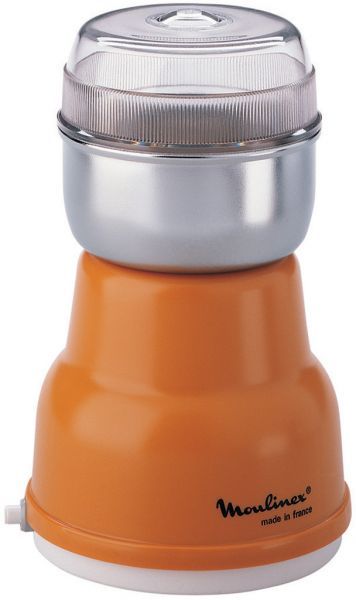
The sauces are homogeneous, without large pieces, all ingredients are well mixed. For starters, you can make sauces from the book that is included, but I'm sure that your assortment of sauces will be replenished with new recipes from the Web. By the way, pesto is not in the branded cookbook, but everything turned out great.
Test No. 2. Mashed potatoes - not a catering, delicacy
Mashed potatoes - what could be simpler, and at the same time how easy it is to spoil it. It is not so easy to prepare airy, without lumps, literally melting in your mouth puree. This dish is very easy to spoil, which, unfortunately, would-be chefs regularly do in many children's educational institutions.
The MOULINEX InfinyForce Ultimate DD878D10 blender can rehabilitate puree and turn it into a gourmet dish. I must say that the French know a lot about mashing, and this is not the first blender in the line of the company, equipped with a mash attachment. And that's great.
Includes two puree attachments. They can be compared with meat grinder grates: one with large holes, the second with small ones. The widest use is the preparation of mashed potatoes from various products, which will be appreciated by mothers who want to feed their babies varied and tasty, and lovers of delicious French dishes. In particular, they are indispensable in the preparation of delicious pates: all the smallest lumps will be “broken”, the dish will be saturated with oxygen, and will become especially tender and airy.
The two attachments can be used one after the other: for example, first purée a dish with the coarse wire rack and then polish with the fine aperture attachment. And you can make puree using only one nozzle.
Results
Everything is easy and fast. There are no complaints about the quality of the puree. It is a little inconvenient to assemble / disassemble the nozzle, as it consists of four parts, two of which are small in size. I recommend storing the nozzle assembled so that you don’t have to look for a knife or a fixing nut at the right time. And I didn’t really like disassembling the nozzle for washing.
I recommend storing the nozzle assembled so that you don’t have to look for a knife or a fixing nut at the right time. And I didn’t really like disassembling the nozzle for washing.
But these are such trifles compared to the ability to cook perfect purees and pâtés at home in a couple of minutes, which is not worth talking about.
Test #3 Generalist
Compact yet large capacity chopper is one of the most sought after blender attachments. Quickly chop greens and onions, break ice for cocktails - everything is available with this attachment. With her help, I prepared mincemeat - a simple and tasty dish in which the uniformity of the components plays an important role.
Total
When mixing, it is sometimes necessary to open the container and carefully mix the ingredients with a spoon, because due to the high speed, the pieces “stick” to the walls of the container. But this happens in all blenders, not just this one.
Everything works the way you want it to: by adjusting the grinding time, you control and choose the size of the pieces. My dish turned out to be tender, like a pate: everything was mixed and crushed so that it is impossible to guess what products the dish was prepared from.
My dish turned out to be tender, like a pate: everything was mixed and crushed so that it is impossible to guess what products the dish was prepared from.
Test No. 4. The actual blender
Manufacturers have worked on the knives for the main nozzle - ActivFlow knives consist of four blades. In this case, two blades are created with a curved shape in order to form a "vortex" flow, and the other two are straight, for mixing.
The most interesting thing about this blender for me was that this usually basic attachment was not so often needed for me. Due to the fact that there are interesting unique accessories in the kit, I used the immersion blender only for making puree soups and frozen cranberry juice. I pureed the soup directly in soup bowls, and prepared fruit drinks in a tall glass: I crushed frozen berries with sugar in a small amount of water with a nozzle.
Total
In order to avoid splashing when mixing the ingredients, set the minimum speed before turning on the blender.
Test No. 5. Instead of a mixer
Standard whisk. Protein whipped in a minute. Everything is great.
Control and comfort
Location of : gear shifter on the handle, power button and turbo on the body. The buttons are separated from each other by a high side, accidentally turning on the turbo mode will not work.
Material : rubberized buttons, anti-slip plastic rotary switch.
Case Ergonomics: The curved shape and deep curve allow the case to be comfortably held in the hand. Thanks to this, the blender is easy to hold, despite the fact that it weighs quite a lot. The blender lies in the palm of your hand, and the index finger just hits the power button. Change speeds with the other hand. The back of the body is made of rubberized material, the blender will not slip even from a wet palm.
Speeds : the manufacturer claims that there are 25 of them. The smooth switch is divided into five blocks, and by and large this blender has five speeds. One division is very close to another, and it is very difficult, for example, to set the 7th or 13th speed, especially since it is not very clear how the regulator should be located in order to turn on this particular speed.
One division is very close to another, and it is very difficult, for example, to set the 7th or 13th speed, especially since it is not very clear how the regulator should be located in order to turn on this particular speed.
But the only thing I can say is why 25 speeds on a blender? In principle, even five speeds is a lot. Usually the maximum position is used for complex tasks, such as crushing ice, and almost the minimum when pureeing soup in a bowl.
Attachment of attachments : all attachments are easily inserted into the grooves on the body when turned clockwise and are just as easy to remove when turned counterclockwise. The situation is a little more complicated with the puree nozzle: you need to install the desired grill, knife and tighten the bolt. The main difficulty is not to lose the bolt while not using the blender.
Storage : Lots of accessories, no special tools or storage systems. Ideally, if you can highlight the shelf in the kitchen cabinet, so that everything is at hand.
Conclusions
Powerful, versatile and easy to clean premium blender with additional features provided by unique accessories. In addition to the usual chopping and stirring functions, complex sauces and purees can be prepared with ease. Long warranty period, European assembly.
Disadvantages: There is no device for storing accessories, it is not always convenient to switch the speed during cooking, the price is rather high.
Moulinex Steelforce DD883D10 immersion blender
Moulinex DD883D10 immersion blender with three attachments has 20 different speeds. It effortlessly chop and mix vegetables and fruits for baby food, smoothies and allows you to prepare many sauces at home.
APPLICATIONS
800 ml mini chopper finely chop vegetables, such as minced meat or fruit for smoothies. And with the whisk attachment, you can beat eggs for cake, cream or meringue.
CONVENIENCE OF USE
All parts of the appliance can be washed in the dishwasher, which allows you to remove even the smallest food residues.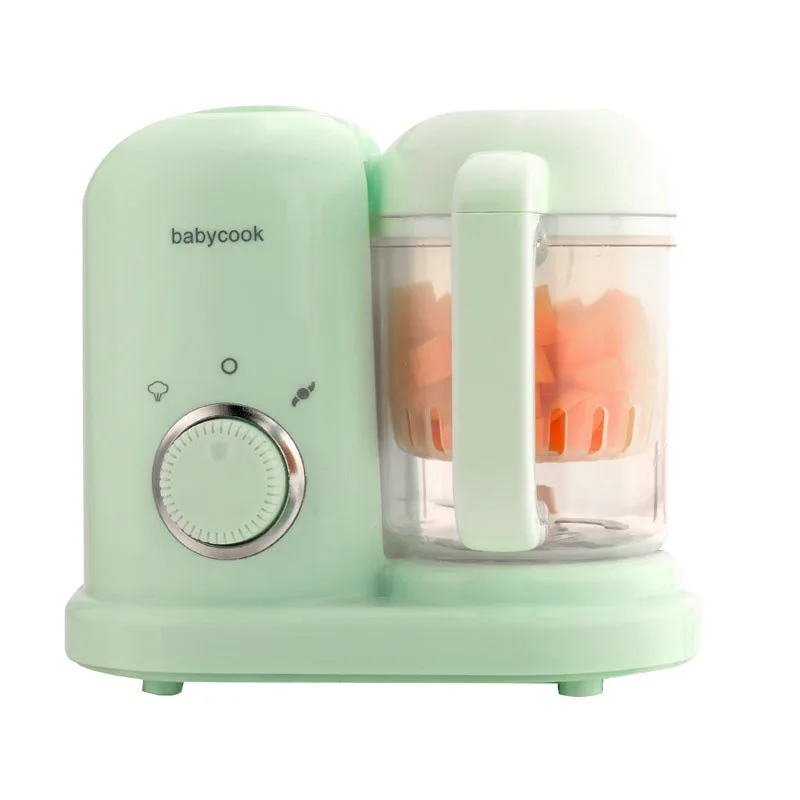
TITANIUM COATED BLADES
Blender blades can last up to twice as long as uncoated stainless steel blades. Consistent ideal result every day is guaranteed.
| Warranty | 2 years |
| Mini chopper | Yes |
| Mini chopper capacity | 800ml |
| Country | China |
| Housing | |
| Body material | st. steel / plastic |
| Rubber grip | Yes |
| Material | |
| Blade material | stainless steel + titanium plated |
| Mini chopper material | plastic |
| Immersion material | st. steel |
| Nozzles | |
| Whisk | 1pc |
| Number of nozzles | 3 |
| Beater | 1pc |
| Chopping/Mixing Attachment | 1 |
| Application | |
| Dishwasher safe | Yes |
| Operating modes | |
| Soft start engine | Yes |
| Modes | turbo |
| Turbo | Yes |
| Model Series | |
| Series | Steelforce |
| Control | |
| Number of modes | 1 |
| Number of speeds | 20 |
| Control type | mechanical |
| Power supply | |
| Power cord length | 1. |












